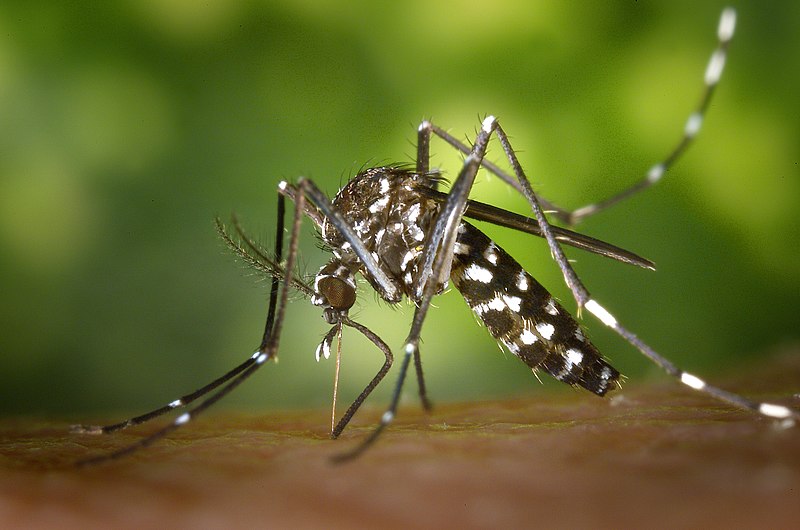

| Visitors Now: | |
| Total Visits: | |
| Total Stories: |

| Story Views | |
| Now: | |
| Last Hour: | |
| Last 24 Hours: | |
| Total: | |
Chikungunya Outbreaks In NYC, Atlanta, Miami Possibility Rising With Temperature
Global travel and climate warming could be creating the right conditions for outbreaks of a new virus in this country, according to a new Cornell University computer model.
The model predicts that outbreaks of chikungunya, a painful virus transported by travelers and spread by the invasive Asian tiger mosquito, could occur in 2013 in New York City during August and September, in Atlanta from June through September, and year-round in Miami. The probability of a disease outbreak is correlated with temperature, as warmer weather allows the Asian tiger mosquito to breed faster and grow in numbers, according to the study published in the November issue of PLOS Neglected Tropical Diseases.
Asian tiger mosquito, Aedes albopictus. The Asian tiger mosquito is about 2 to 10 mm length with a striking white and black pattern.

According to the simulation, there is a high probability of a chikungunya outbreak if a single infected person arrives in New York in July or August and is bitten by an Asian tiger mosquito. The risks are the same, but with wider time frames, for transmission in Atlanta and Miami, according to the paper.
Asian tiger mosquitoes were introduced to the United States in Texas in the 1980s; they are established up the East Coast into New Jersey and are rising in numbers in New York City. The aggressive mosquito outcompetes local varieties and transmits more than 20 pathogens, including chikungunya and dengue, said Laura Harrington, associate professor of entomology and the study’s senior author.
“The virus is moving in people, and resident mosquito populations are picking it up,” Harrington said.
The model estimates that with typical regional temperatures, a chikungunya outbreak in New York would infect about one in 5,000 people, said Diego Ruiz-Moreno, a postdoctoral associate and the paper’s lead author
“However, this number would increase drastically as temperatures rise due to climate change,” Ruiz-Moreno said.
Chikungunya symptoms include a fever, severe joint pain, achiness, headache, nausea and fatigue, as well as “debilitating and prolonged” pain in the small joints of the hands and feet, according to the paper. The virus originated in Central Africa and is endemic in Southeast Asia.
Since no chikungunya vaccine exists, U.S. residents can help prevent an outbreak by removing standing water, wearing long sleeves and repellent during the day when the mosquitoes feed, and knowing the risk and symptoms when traveling, Harrington said.
The study was funded by a National Institute for Food and Agriculture Hatch grant and Cornell’s Atkinson Center for a Sustainable Future Climate Change and Disease Program.
2012-12-18 12:22:58
Source: http://nanopatentsandinnovations.blogspot.com/2012/12/chikungunya-outbreaks-in-nyc-atlanta.html
Source:


